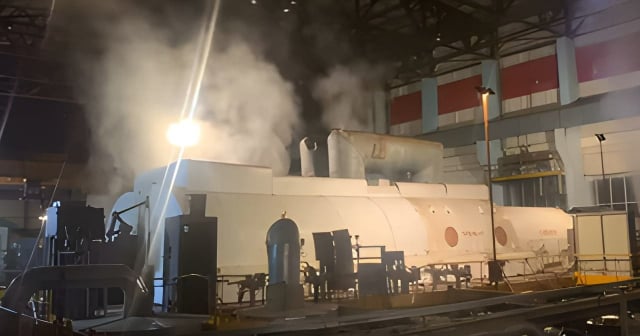Engineer Edier Guzmán Pacheco, Functional Director of Thermal Generation at Unión Eléctrica, explains that starting up a system like the National Electroenergetic System (SEN) requires a lot of coordination, preparation, and a strength that develops during the process. During the attempt to recover the SEN in the morning, the system failed again. According to Engineer Guzmán Pacheco, this type of failure is common and has happened many times, which forces one to confront the problem and restart the process immediately.
In the specific case of what happened, one of the key steps failed again, which caused the system to revert and "crash again." This forced the team to return to an initial position, which can happen frequently in these processes. However, the engineer emphasizes the importance of preventing these failures from occurring and addressing them quickly to minimize the impact.
Since October 18, the SEN has experienced three significant collapses. The second collapse occurred on October 19 during the recovery attempt, according to the Unión Eléctrica de Cuba. Subsequently, on the night of October 20, there was another disconnection in the western microsystem, indicating a new setback in recovery efforts. Today, October 21, the Santiago-Guantánamo microsystem was also affected after a breakdown at the Renté plant, adding another challenge to the already complicated situation of the system.
Engineer Guzmán Pacheco also points out that the causes of these failures can be diverse, from technical problems in the equipment to difficulties in the synchronization of the different generating plants. He added that the infrastructure of the SEN is old and faces limitations due to a lack of adequate maintenance and a shortage of resources. These factors increase the complexity of the recovery process and make it necessary to have highly trained personnel willing to work under pressure.
Despite the difficulties, the engineer highlights the effort and commitment of the Unión Eléctrica team, which works tirelessly to restore supply. He emphasizes that each failed attempt provides valuable information to improve future restart efforts and advance the stability of the system. Additionally, he mentions the importance of distributed generation as support during these critical moments, as it allows feeding parts of the system while the main plants are reactivated.
On October 18, 2024, Cuba suffered a massive blackout due to the total disconnection of the National Electroenergetic System (SEN), leaving millions of Cubans without electricity. The cause was the shutdown of the Antonio Guiteras thermoelectric plant, one of the most important in the country. Although the government reported that it was working to restore the service, they admitted that there was no defined timeline for it.
Economist Pedro Monreal characterized the situation as a true "energy bankruptcy," caused by failed internal decisions rather than external factors. Furthermore, the lack of electricity has affected other essential services such as liquefied gas, internet access, and commercial activity in general. Meanwhile, Cubans continue to face the consequences of this crisis, which still shows no clear solution in sight.
What do you think?
COMMENTFiled under:
